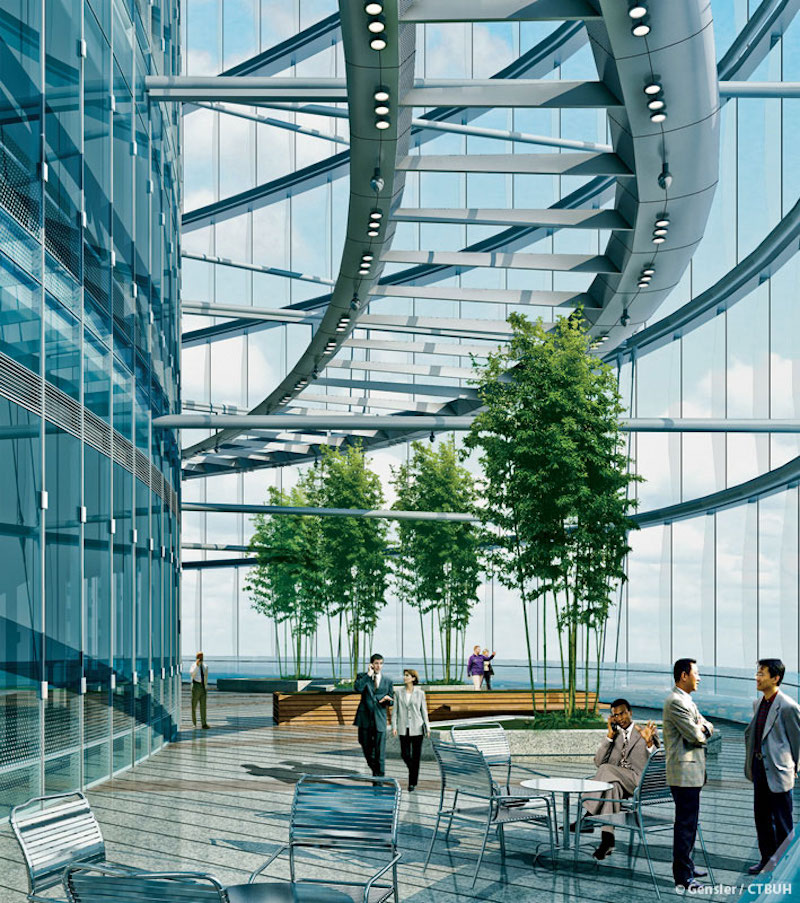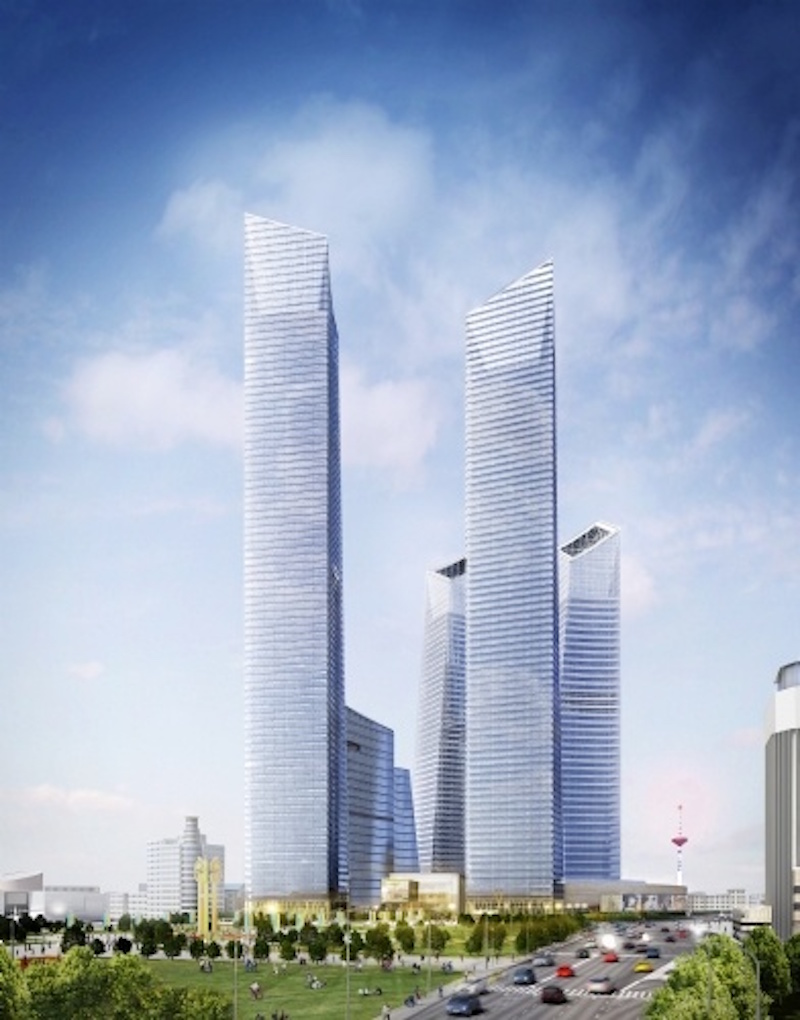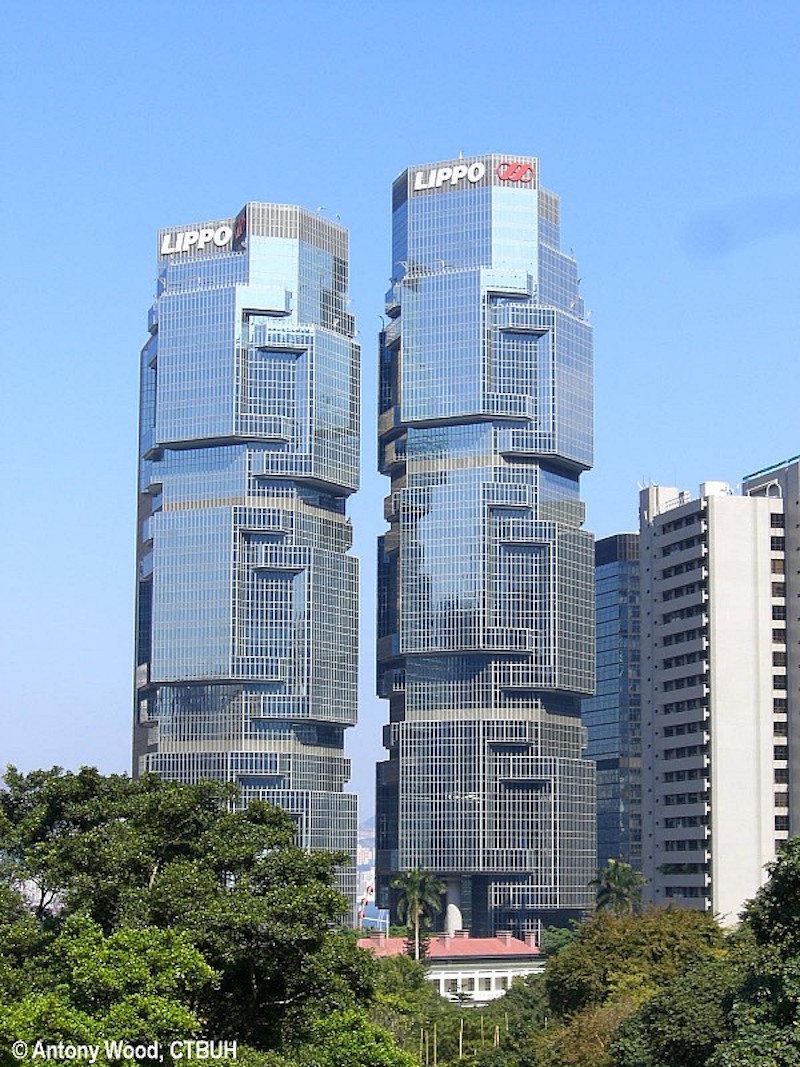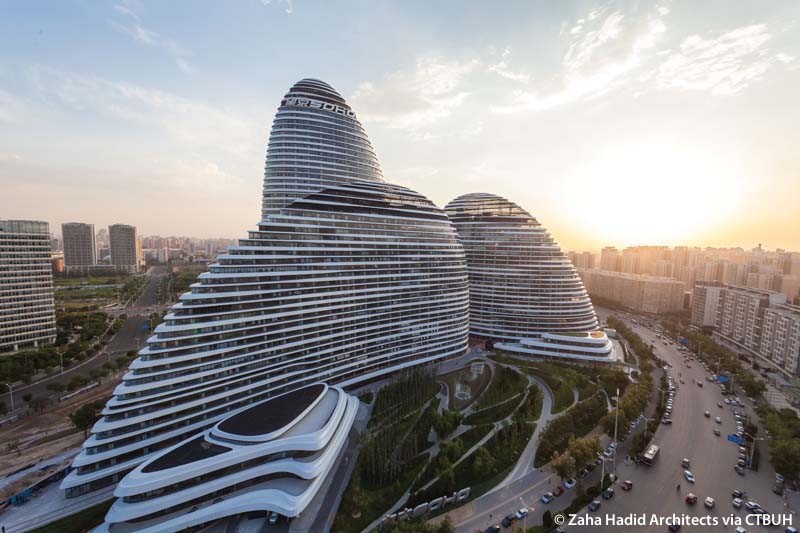China currently has nine out of the top 20 tallest buildings in the world that are either already completed or in various stages of proposal, approval, and construction. Thus, it makes sense that China just completed its first regional Tall Building Awards. The China International Exchange Committee for Tall Buildings (CITAB) and the Council on Tall Buildings and Urban Habitat (CTBUH) have just announced the award recipients for the inaugural contest.
The awards program was based on the successful CTBUH worldwide tall building awards program. The CITAB-CTBUH China Tall Building Awards Program looks to recognize the Building Teams responsible for the most innovative, beautiful, and successfully executed high-rise projects in China.
There were six categories of recognition for the first year of the awards program (Best Tall building China, China urban habitat, China Innovation, China Construction, China Outstanding Achievement, and China Tall Building Legacy). Each category, except for Best Tall Building, had one winner and multiple Honorable Distinction recipients. Honorable distinction recipients represented “standout projects from those submitted” that were “deserving of special recognition,” according to the awards’ website.
The Best Tall Building Category was composed of four Excellence Award recipients. Recipients of this award “represent the highest level of submitted projects.” One of the four buildings that received the Excellence Award will also be considered to receive the Overall 2016 Best Tall Building China Award that will be given out at the inaugural China Awards Symposium in Shanghai in May 2016.
Below you will find a brief CITAB-CTBUH description of each category, as well as what we at Building Design+Construction believe to be the most impressive and innovative award recipient in each category.
1. Best Tall Building China
This category recognizes projects that have made extraordinary contributions to the advancement of tall buildings and the urban environment, and that achieve sustainability at the highest and broadest level.
BD+C's Favorite: Wangjing SOHO, Beijing
There is something that is just pleasantly whimsical about this complex. Perhaps it is that it resembles the hills in the background of old Mario games (you know, the ones with the eyes) or maybe it is just how it manages to stand out from all the structures around it. Either way, this is an eye-catching building well deserving of its recognition.
 Photo Credit: Zaha hadid Architects
Photo Credit: Zaha hadid Architects
CITAB-CTBUH says: Wangjing SOHO, Beijing, is a complex that resembles three dynamic mountain- or fish-like forms, pulling flow through the site with their convexity. The juxtaposition of the towers affords a continuously changing, elegant, and fluid view from all directions. The project is particularly successful and properly activated as a result of its emphasis on transportation access, with special parking spots reserved for low-emission cars, bicycle parking, direct subway connections, and bus station adjacency.
2. China Urban Habitat
The CITAB-CTBUH 2016 China Urban Habitat Award recognizes projects ranging from brilliantly executed master plans to urban designs that have created quality urban environments, where the interface between tall buildings and the urban realm is exemplary. These projects demonstrate a positive contribution to their surroundings, adding to the social sustainability of both their immediate and wider settings, and representing design informed by environmental and cultural contexts.
BD+C's Favorite: Shenye TaiRan Building, Shenzhen
From one angle this structure looks like a Mayan pyramid rising from the Chinese landscape. But, if you flip around to the other side, you see what appears to be a cross section of that pyramid, and the inside is a vibrant, living entity.
 Photo Credit: Zhubo Design Group
Photo Credit: Zhubo Design Group
CITAB-CTBUH says: Shenye TaiRan Building, Shenzhen, is designed to be inviting on a local, human scale, yet prominent at an urban scale. This is achieved through a series of stepped rooftop terraces and a large central communal space framed by the mass of the building.
3. China Innovation
The CITAB-CTBUH 2016 China Innovation Award recognizes a specific area of recent innovation in a tall building project that has been incorporated into the design, or implemented during construction, operation, or refurbishment. Unlike the China Best Tall Building award, which considers each project holistically, this award is focused on one special area of innovation within the design, construction, or operation of the project.
BD+C's Favorite: The Mega-Suspended Curtain Wall of Shanghai Tower, Shanghai
Just by looking at this building it is pretty apparent there was some major innovation involved in creating it. As it twists into the sky like a giant Twizzler to the height of 2,073 feet, the building is harder to miss than 1980s Eddie Murphy wearing one of his patented leather suits. The fact that the curtain wall allows for atriums dozens of stories in the air is especially nifty.
 Rendering Courtesy of Gensler/CTBUH
Rendering Courtesy of Gensler/CTBUH
CITAB-CTBUH says:The Mega-Suspended Curtain Wall of Shanghai Tower, Shanghai, is unique for incorporating two independent envelopes so that they act in harmony with one another. The inner skin is circular, while the outer skin is shaped like a rounded triangle in plan, which tapers and twists along the vertical axis. This design strategy enables the megatall building to achieve optimal wind performance, while allowing the primary structure to remain conventional and efficient. The spatial separation between the two skins creates an atrium space every 12 to 15 floors, a design feature that the jury acknowledged as particularly novel.
4. China Construction
The CITAB-CTBUH 2016 China Construction Award recognizes construction excellence in a tall building project, including but not limited to quality in construction, technical innovation, proficiency of execution of a complicated or exacting design, triumph or difficult conditions, superlative speed, efficiency, or scale. Award recipients demonstrate a commendable combination of some or all of the above.
BD+C's Favorite: Hang Lung Plaza, Shenyang
While only one of the four planned towers has been completed as part of the Forum 66 complex, a quick peek at the renderings show just how complicated this building process was and will continue to be. Which makes what has already been accomplished all the more impressive.
 Rendering Courtesy of CTBUH
Rendering Courtesy of CTBUH
CITAB-CTBUH says: Hang Lung Plaza, Shenyang, stands as a new focal point for the city and a leading example of Chinese excellence in construction. The construction process incorporated unmatched safety considerations and oversight mechanisms, and overcame challenges arising from its unique structural system. The tower was conceived to be part of a family of neighboring towers united through the use of a consistent curtain-wall design and an angled rooftop that leans away from the center of the complex.
5. China Tall Building Legacy
The CITAB-CTBUH 2016 Legacy Award recognizes proven value and performance over the period of time from China’s economic opening in 1978 to a point up to 10 years preceding the award year. This award gives an opportunity to reflect back on buildings that have been completed and operational for at least 10 years, and acknowledges projects that have performed successfully long after the ribbon-cutting ceremonies have passed. In its inaugural year, ten winners and ten Honorable Distinction recipients were selected, representing a wide range of completion years between 1978 and 2005.
BD+C's Favorite: Lippo Center, Hong Kong
Built in 1988, this building may be a few decades old, but it wears its time period not in shame, but as a badge of honor. The two-tower construction looks like a combination of a 1980s 8-bit or 16-bit video game and a kitschy tiki figure. It is so wonderfully 80s you can almost see a parallel universe where John McClane was trapped in these buildings during that ill-fated Christmas party as opposed to the fictional Nakatomi Plaza. An award as a legacy building is fitting.
 Photo Credit: Antony Wood, CTBUH
Photo Credit: Antony Wood, CTBUH
Additionally, Dasui Wang was awarded with the China Outstanding Achievement Award for his extraordinary contributions to the advancement of tall buildings and the urban environment in China during his professional career. Dasui Wang, ECADI, has been granted the 2016 China Outstanding Achievement Award, having played a design leadership role in many of China’s tallest and most iconic buildings from the past three decades. Mr. Wang is the country’s foremost thought leader on the design and implementation of supertall buildings, with experience in both structural engineering and architecture.
See the full list of winners here.
Related Stories
| Nov 16, 2010
CityCenter’s new Harmon Hotel targeted for demolition
MGM Resorts officials want to demolish the unopened 27-story Harmon Hotel—one of the main components of its brand new $8.5 billion CityCenter development in Las Vegas. In 2008, inspectors found structural work on the Harmon didn’t match building plans submitted to the county, with construction issues focused on improperly placed steel reinforcing bar. In January 2009, MGM scrapped the building’s 200 condo units on the upper floors and stopped the tower at 27 stories, focusing on the Harmon having just 400 hotel rooms. With the Lord Norman Foster-designed building mired in litigation, construction has since been halted on the interior, and the blue-glass tower is essentially a 27-story empty shell.
| Nov 3, 2010
Rotating atriums give Riyadh’s first Hilton an unusual twist
Goettsch Partners, in collaboration with Omrania & Associates (architect of record) and David Wrenn Interiors (interior designer), is serving as design architect for the five-star, 900-key Hilton Riyadh.
| Oct 13, 2010
Modern office design accentuates skyline views
Intercontinental|Exchange, a Chicago-based financial firm, hired design/engineering firm Epstein to create a modern, new 31st-floor headquarters.
| Oct 13, 2010
HQ renovations aim for modern look
Gerner Kronick + Valcarcel Architects’ renovations to the Commonwealth Bank of Australia’s New York City headquarters will feature a reworked reception lobby with back-painted glass, silk-screened logos, and a video wall.
| Oct 12, 2010
Guardian Building, Detroit, Mich.
27th Annual Reconstruction Awards—Special Recognition. The relocation and consolidation of hundreds of employees from seven departments of Wayne County, Mich., into the historic Guardian Building in downtown Detroit is a refreshing tale of smart government planning and clever financial management that will benefit taxpayers in the economically distressed region for years to come.
| Oct 8, 2010
Union Bank’S San Diego HQ awarded LEED Gold
Union Bank’s San Diego headquarters building located at 530 B Street has been awarded LEED Gold certification from the Green Building Certification Institute under the standards established by the U.S. Green Building Council. Gold status was awarded to six buildings across the United States in the most recent certification and Union Bank’s San Diego headquarters building is one of only two in California.
| Sep 21, 2010
New BOMA-Kingsley Report Shows Compression in Utilities and Total Operating Expenses
A new report from the Building Owners and Managers Association (BOMA) International and Kingsley Associates shows that property professionals are trimming building operating expenses to stay competitive in today’s challenging marketplace. The report, which analyzes data from BOMA International’s 2010 Experience Exchange Report® (EER), revealed a $0.09 (1.1 percent) decrease in total operating expenses for U.S. private-sector buildings during 2009.












